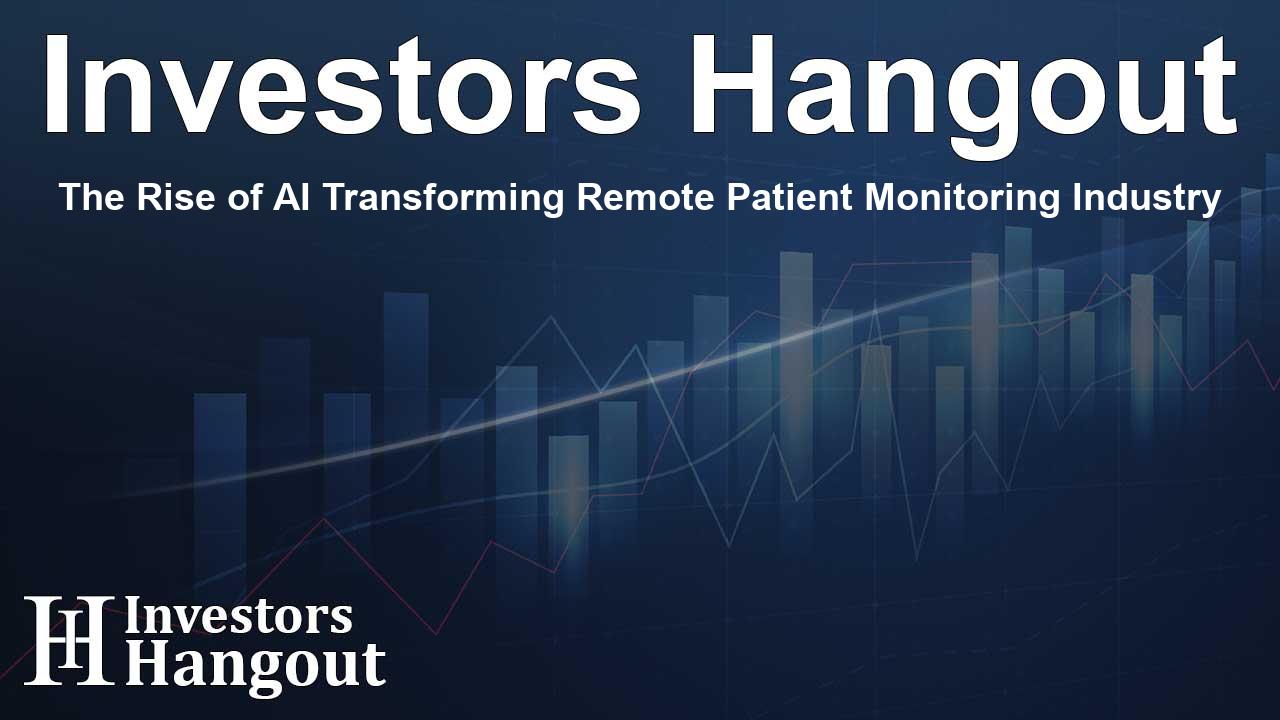The Rise of AI Transforming Remote Patient Monitoring Industry

Introduction to AI in Remote Patient Monitoring
The global AI in remote patient monitoring market has witnessed remarkable growth, with a valuation of US$1,551.8 million in recent years and expected to reach a staggering US$8,438.5 million by the end of the decade. This growth illustrates the transformative power of AI technologies in enhancing patient care and streamlining healthcare services.
Factors Fuelling Market Expansion
Several factors are contributing to this impressive market expansion. The proliferation of telehealth services has made healthcare more accessible to patients across various demographics. Furthermore, supportive policies, such as the Telehealth Modernization Act and the European Health Data Space regulation, have reinforced these advancements by promoting integration and efficiency in virtual care.
Government Initiatives and Legislation
Countries like the U.S. and India are actively promoting digital health frameworks, with initiatives such as India’s National Digital Health Mission leading the charge. These strategies are complemented by the U.K.'s NHS digital ecosystem that integrates AI into remote patient monitoring systems, ensuring both scalability and effectiveness.
Urgency in Healthcare Challenges
With the rising prevalence of chronic diseases and a strain on hospital resources, AI-driven remote patient monitoring systems are essential for early condition detection and patient management. This is crucial not only for acute care but also for chronic disease management, making it a significant focus for healthcare providers.
Market Dynamics: Opportunities and Challenges
The adoption of wearable devices and AI analytics is a major driver of market growth. As of early 2023, a substantial number of Medicaid programs in the U.S. have expanded their coverage of remote patient monitoring. However, the industry faces regulatory hurdles, particularly inconsistencies in definitions of medical devices across regions.
Emerging Opportunities
There is a significant opportunity in emerging markets, especially in Asia Pacific, spurred by governmental healthcare investments and innovative projects aimed at harnessing AI for improved health outcomes. For instance, initiatives in Australia and India highlight the potential benefits of AI integration in healthcare.
Key Players Shaping the Market
The competitive landscape is populated by notable players including Koninklijke Philips N.V., Medtronic, and Boston Scientific Corporation. These companies are at the forefront due to their strong research and development capabilities and robust product offerings.
Recent Developments
Recent advancements have emphasized the sector’s momentum, with approvals for new monitoring technologies and the launch of innovative products tailored for varied healthcare needs, including the newly introduced Connected Baby Monitor by Philips.
Future Growth Projections
Looking ahead, the Asia Pacific region is projected to exhibit the highest growth rates. This surge is attributed to increasing investments in digital health infrastructure and a vast patient base eager for innovative solutions. The evolution of AI and mobile technology will continue to redefine healthcare paradigms, making remote monitoring an essential strategy for future healthcare delivery.
Strategic Implications for Healthcare Leaders
For healthcare executives, this market represents a critical juncture. By leveraging AI-driven solutions, hospitals can optimize care delivery mechanisms, insurers can mitigate costs, and MedTech enterprises can explore collaboration opportunities in developing markets to enhance service offerings.
Conclusion
The intersection of AI and remote patient monitoring signifies a transformative era in healthcare. As this market continues to evolve, it’s vital for industry participants to embrace these technologies for better patient care and operational efficiency.
Frequently Asked Questions
1. What is the primary factor driving the growth of AI in remote patient monitoring?
The primary driver is the rapid expansion of telehealth services, providing greater accessibility to healthcare and enhanced patient management.
2. Which regions are showing the fastest growth in the AI remote patient monitoring market?
The Asia Pacific region is expected to experience the highest growth due to increased investments and digital health adoption.
3. Who are the leading companies in the AI in remote patient monitoring market?
Major players include Koninklijke Philips N.V., Medtronic, and Boston Scientific Corporation, known for their innovation and product diversity.
4. What challenges are faced in the AI healthcare sector?
Challenges include regulatory inconsistencies, data privacy concerns, and barriers to effective AI model training due to fragmented healthcare records.
5. How is AI improving patient outcomes in healthcare?
AI enhances patient outcomes by enabling early detection of conditions, remote monitoring, and personalized care pathways that reduce hospitalization needs.
About The Author
Contact Olivia Taylor privately here. Or send an email with ATTN: Olivia Taylor as the subject to contact@investorshangout.com.
About Investors Hangout
Investors Hangout is a leading online stock forum for financial discussion and learning, offering a wide range of free tools and resources. It draws in traders of all levels, who exchange market knowledge, investigate trading tactics, and keep an eye on industry developments in real time. Featuring financial articles, stock message boards, quotes, charts, company profiles, and live news updates. Through cooperative learning and a wealth of informational resources, it helps users from novices creating their first portfolios to experts honing their techniques. Join Investors Hangout today: https://investorshangout.com/
The content of this article is based on factual, publicly available information and does not represent legal, financial, or investment advice. Investors Hangout does not offer financial advice, and the author is not a licensed financial advisor. Consult a qualified advisor before making any financial or investment decisions based on this article. This article should not be considered advice to purchase, sell, or hold any securities or other investments. If any of the material provided here is inaccurate, please contact us for corrections.
